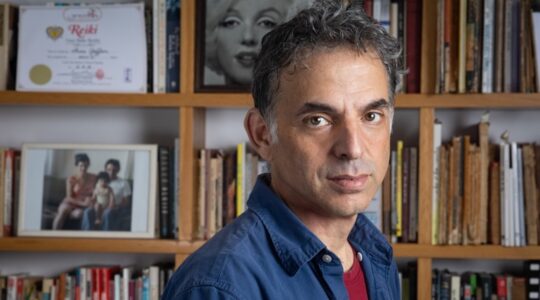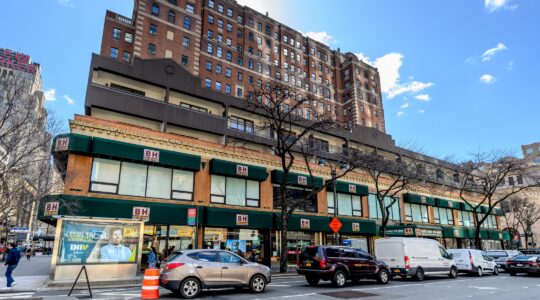
What made the 1964 Rochester race riot extraordinary was that it was so unexpected.
"I lived in the city at the time, but my wife and I were in Paris on our honeymoon when the news broke," recalled Paul Goldberg via email. "We had just had a conversation with someone we met on the trip and had been talking about how peaceful things were in Rochester and how unlikely anything as raw as a race riot could happen there. As we talked another person on the bus, overhearing us, handed us the Herald Tribune with the breaking news. Shocked and horrified would be the best description."
This was especially true for Jewish community of this upwardly mobile upstate town, whose stores and businesses on Joseph Avenue were decimated over the course of the three-day riots.
[[READMORE]]
"By the third day, we had permission to enter the area," recalled Joan Carr, a teenager at the time, in an e-mail. "Although the front of the building was being protected by the National Guardsmen, no one was protecting the back door where the looting was continuing. When we entered the building, there were a few people helping themselves. A couple of them were those who my parents extended credit to. My memory of my Mom screaming at them and crying at the same time, will always remain with me. They apologized and explained they were drawn in by the mood of the moment."
For Nathan Robfogel, a 29-year-old lawyer, the circumstances were even more unusual.
"I was downtown because my law firm was representing a client who had a contract that required him to tender certain amount of money," said Robfogel in a phone interview. "It turned out to be ten thousand dollars cash; I was instructed to leave the money in a briefcase at an empty building."
When the riots from the previous night flared up again before his eyes, Robfogel ran back to the bank and deposited the contents of the briefcase into the night deposit box. Later that night, Robfogel was slated to go out with the girl he was dating, whom he would eventually call his wife. As the National Guard enforced a curfew in wake of the looting, alcohol was barred downtown, leaving the two to travel outside of the city that night.
Like the riot itself, the accounts of Jewish folk who lived through it are nuanced, multidimensional and a tad disorienting — not in terms of reliability, but more for the concrete sense of loss and lack of a good explanation as to why it happened. Robfogel, who was involved in the
Genesee Valley chapter of the American Civil Liberties Union chapter, suggested as a factor what he described as the state and local government’s laissez faire approach to the city’s burgeoning Black population. (As the JTA headline that week showed, the term wasn’t yet fashionable.)
Regardless of the cause, of the four stories we heard from JTA readers the week that marked the forty-seventh anniversary of the riot, none were quick to assign blame to the rioters.
"Just like in other incidents," wrote Michael Grossman, "there were instigators along with spectators…with the instigators causing the problems." Within the first day, the Grossman family’s soda water bottling factory on Thomas Street, parallel to Joseph Avenue, remained intact, but their liquor store on 325 Joseph Ave., as he recalls, "was completely looted."
Still, Grossman didn’t attribute his misfortunes to underlying black-Jewish tensions. "The looting of businesses in the area seemed spontaneous without people trying to take vengeance upon the people who owned the businesses in the area," he wrote.
In a statement to The Atlanta Southern Israelite a few weeks after the riot, the Rev. Martin Luther King, Jr. denied anti-Semitism as an underlying cause and expressed his "dismay and disappointment" about the damage to Jewish stores, especially in light of Jewish participation in the civil rights movement. "I am particularly pained to learn that a large percentage of the looted stores were owned by our Jewish friends since, as a group, the Jewish citizens of the United States have always stood for freedom, justice, and an end to bigotry."
The Rochester riot might have gotten more attention, were it not for similar rioting having occurred the week before in New York City. Ken Reich, a Life Magazine reporter who also happened to be Jewish, covered the Rochester riot by spending time with Meyer and Diane Rock, Joan Clar’s parents who ran Itkins Department Store. As Clar recalled this story, she remembered that someone had taken pictures of the event. During a lunch break this week, Clar hurried out to her 97-year-old mother’s apartment and scanned the photos that Reich had sent, along with the following note, dated August 1, 1964:
Dear Mr. Rock,
I’m sorry the story on Rochester did not appear; frequently this happens–new, more up-to-date pictures come in on another story and the one formerly slated to go is knocked out.
However, I’m enclosing three prints of pictures we took in your shop. I thought you would probably like to have them.
Best regards to your wife.
Sincerely,
Ken Reich
Life Reporter
Reich passed away in 2008, but his courteous gesture provides today’s readers a unique visual snapshot of the moment that Rochester’s Jewish character was literally shattered.
"The area was never the same after the riots," said Grossman. "Rochester’s version of NYC’s Lower Eastside would never return to the excitement and energy that existed on Joseph Avenue prior to July 24, 1964."

If you have photos or memories of how the Jewish community was affected by Rochester or other "race riots" in American history, we invite you to share them via e-mail to: archive@jta.org
Follow the JTA Archive on Facebook and Twitter.
JTA has documented Jewish history in real-time for over a century. Keep our journalism strong by joining us in supporting independent, award-winning reporting.





